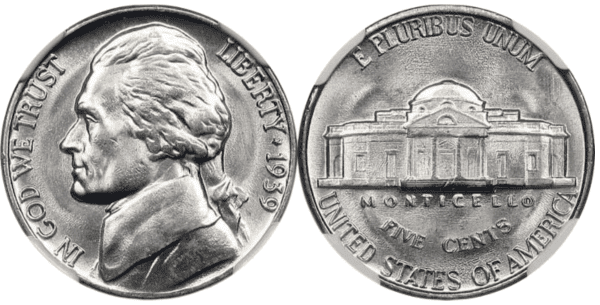Prelude to a Passion: My Love Affair with the Nickel
Let me take you on a remarkable journey through one of America‘s most understated treasures—the nickel. As a seasoned numismatist with decades of collecting experience, I‘ve discovered that this small coin carries far more than its five-cent value. It‘s a metallic time capsule, preserving stories of innovation, artistry, and national identity.
The First Encounter: When Metal Meets History
My fascination began decades ago in my grandfather‘s study, where an extensive coin collection sparked my imagination. Among those carefully preserved pieces, nickels stood out—not just as currency, but as miniature historical documents waiting to be deciphered.
The Evolutionary Landscape of the Nickel
Silver Beginnings: The Half-Dime Era
Before becoming the nickel we recognize today, this coin lived another life. From 1794 to 1873, the "half-dime" represented the first iteration of America‘s five-cent currency. Crafted entirely from silver, these coins were delicate representations of a young nation‘s monetary system.
Imagine holding a piece of history smaller than your thumbnail—each silver half-dime whispered stories of economic uncertainty, westward expansion, and emerging national identity. These coins weren‘t just currency; they were tangible connections to our ancestors‘ daily experiences.
The Metallic Transformation
In 1866, a significant metamorphosis occurred. The U.S. Mint transitioned from pure silver to a copper-nickel composition, marking the birth of the modern nickel. This wasn‘t merely a material change but a technological statement about American industrial capabilities.
Thomas Jefferson: More Than a Portrait
The Man Behind the Coin
When Felix Schlag‘s design was selected in 1938, Thomas Jefferson became more than a historical figure—he became a permanent fixture in Americans‘ daily transactions. But what makes Jefferson‘s representation so compelling?
Jefferson embodied complexity. A founding father, philosopher, and problematic slaveholder, his image on the nickel represents not just an individual, but the multifaceted nature of American history. Each time you hold a nickel, you‘re engaging with a nuanced narrative of progress, contradiction, and potential.
Artistic Considerations in Coin Design
Schlag‘s design was no random selection. Based on a Rembrandt Peale portrait from 1805, the nickel‘s Jefferson represents careful artistic consideration. Every curve, every line tells a story of historical authenticity and aesthetic precision.
The Monticello Connection: A Home‘s Legacy
Monticello isn‘t merely a background element—it‘s a profound representation of Jefferson‘s intellectual and architectural vision. This Virginia plantation home symbolizes creativity, innovation, and the complex legacy of early American leadership.
When you examine the nickel‘s reverse side, you‘re not just looking at a building. You‘re witnessing an architectural marvel that represents Jefferson‘s intellectual breadth, his commitment to design, and the intricate relationship between personal vision and national identity.
Technological Marvels of Minting
The Precision of Production
Modern nickel production is a testament to technological innovation. Each coin represents a complex dance of metallurgy, engineering, and artistic precision. The current composition—75% copper and 25% nickel—isn‘t arbitrary but carefully calculated to ensure durability, aesthetic appeal, and economic efficiency.
Annual production exceeding 1.3 billion coins might seem mundane, but each piece represents a moment of technological achievement. The Philadelphia and Denver mints aren‘t just manufacturing facilities; they‘re modern temples of craftsmanship.
Collector‘s Perspective: Rare Treasures and Hidden Stories
The Thrill of Discovery
For passionate collectors like myself, nickels represent more than monetary value. Each rare variation—like the 1937-D Three-Legged Buffalo Nickel or Westward Journey commemorative editions—tells a unique story.
These aren‘t just coins; they‘re historical artifacts waiting to be understood. The excitement of discovering a rare piece isn‘t about financial value but about connecting with a moment frozen in metallic time.
Cultural Reflections and Controversies
Beyond Currency: A Mirror of Society
Jefferson‘s representation isn‘t without complexity. His slaveholding history and complicated relationship with Native Americans add layers of historical nuance to the coin‘s symbolism.
This complexity is precisely why numismatics fascinates me. Coins aren‘t just metal—they‘re conversations about identity, progress, and the ongoing American narrative.
The Future of Physical Currency
In an increasingly digital world, physical currency might seem obsolete. Yet, nickels persist—a tangible connection to our collective history.
Each nickel carries stories of economic shifts, technological innovations, and cultural transformations. They are small, circular historians, quietly documenting our journey.
A Personal Reflection: Why Nickels Matter
As a collector, I‘ve learned that true value transcends monetary worth. These five-cent pieces are portals to understanding—invitations to explore the intricate tapestry of American experience.
Next time you receive a nickel, pause. Look closely. You‘re holding more than currency—you‘re holding a story.
Epilogue: The Ongoing Narrative
The nickel‘s journey continues. Each year brings subtle design modifications, technological improvements, and new stories waiting to be told.
And for collectors like me, the excitement never diminishes. We‘re not just preserving coins—we‘re safeguarding memories, innovations, and the beautiful complexity of human experience.
Welcome to the world of nickels—where every cent tells a story.
